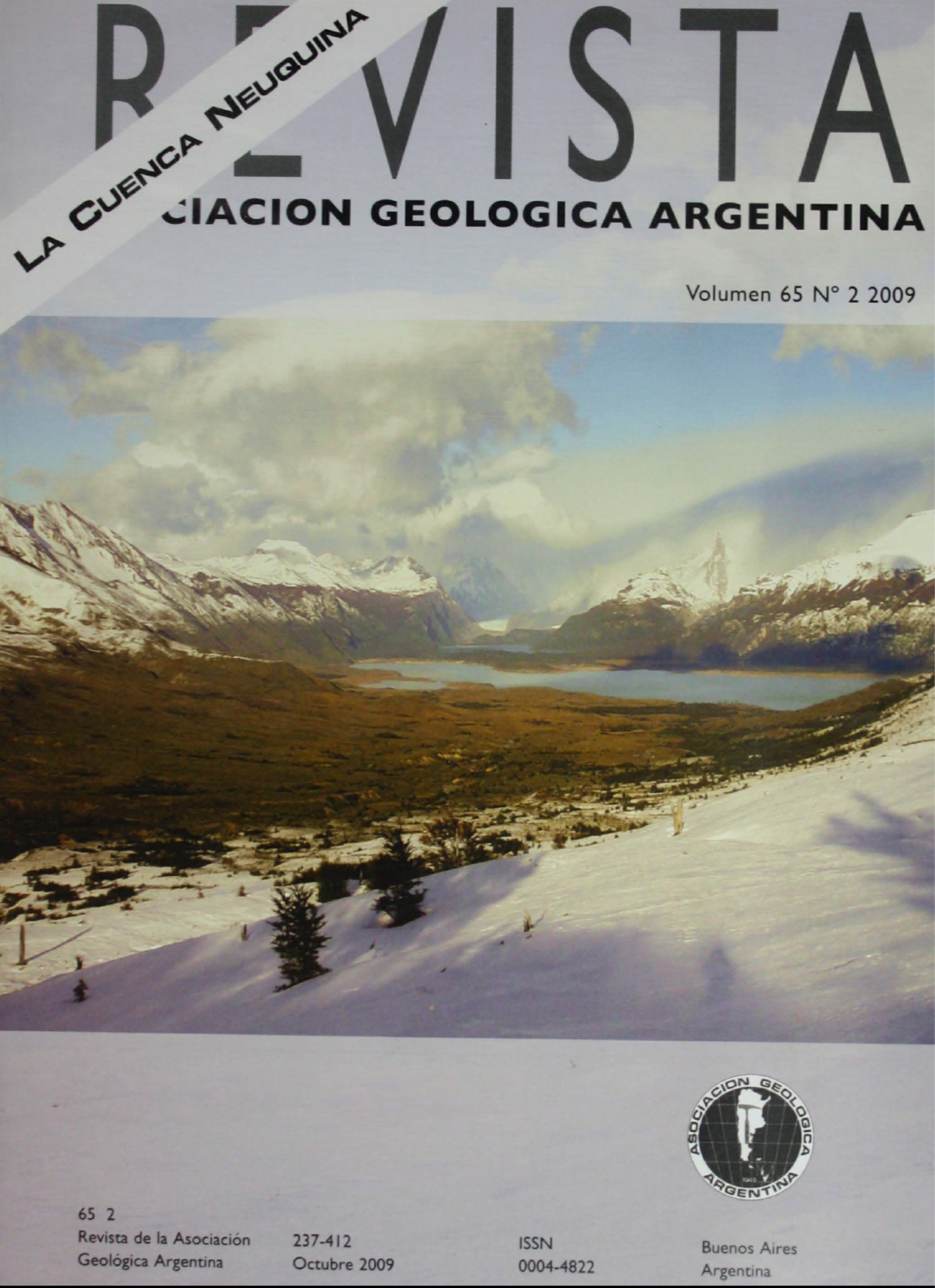El sinrift de la dorsal de Huincul, Cuenca Neuquina: evolucióny control sobre la estratigrafía y estructura del área
Contenido principal del artículo
Resumen
La dorsal de Huincul es unrasgo morfo-estructural sobresaliente que prácticamente divide a la cuencaNeuquina en dos sectores, se extiende por 250 km con una orientación generalE-O desde el frente orogénico andino al oeste hasta la zona de General Roca aleste. Está compuesta por un tren de estructuras de orientación preferencial E-Ofuertemente asimétricas y con vergencia predominante hacia el sur; el rechazovertical de éstas excede en muchos casos 1,5 kilómetros. La evolución de ladorsal de Huincul comenzó con el desarrollo de sistemas de hemigrábenes (half-grabens)de orientación noroeste, típicamente con el bloque hundido al norte; estatendencia cambia el en sector oriental a una orientación oeste-noroeste.Típicamente tienen 10 a 20 km de longitud en el sentido del rumbo y un rellenoentre 1,5 y 5 km de depósitos del Triásico superior al Toarciano Inferior. Lamorfología previa a la primera ingresión marina durante el Jurásico Inferiorera de un sistema de hemigrábenes cuyo relieve había sido en parte enrasado porlos depósitos volcánicos y clásticos del Precuyano; además altos de basamentoprominentes y edificios volcánicos controlaron la distribución de lossedimentos marinos jurásicos. La influencia de la subsidencia de rift estáclaramente documentada durante el Toarciano Inferior; luego el área atravesó unperíodo de relativa calma tectónica acompañado por la progradación de lossistemas deposicionales desde el sur sin interferencia de los rasgosestructurales subyacentes. El desarrollo de un sistema compresivo que abarcódesde el Jurásico Superior hasta el Cretácico Superior dio a la dorsal deHuincul su configuración actual.
Detalles del artículo

Esta obra está bajo una licencia internacional Creative Commons Atribución-NoComercial 4.0.
Nota de copyright
Los autores conservan los derechos de autor y garantizan a la revista el derecho de ser la primera publicación del trabajo licenciado según una licencia de atribución Creative Commons que permite a otros compartir el trabajo con el reconocimiento de la autoría y de la publicación en la que se publicó por primera vez.
Declaración de privacidad
Los nombres y direcciones de correo electrónico introducidos en esta revista se usarán exclusivamente para los fines declarados por esta revista y no estarán disponibles para ningún otro propósito u otra persona.

